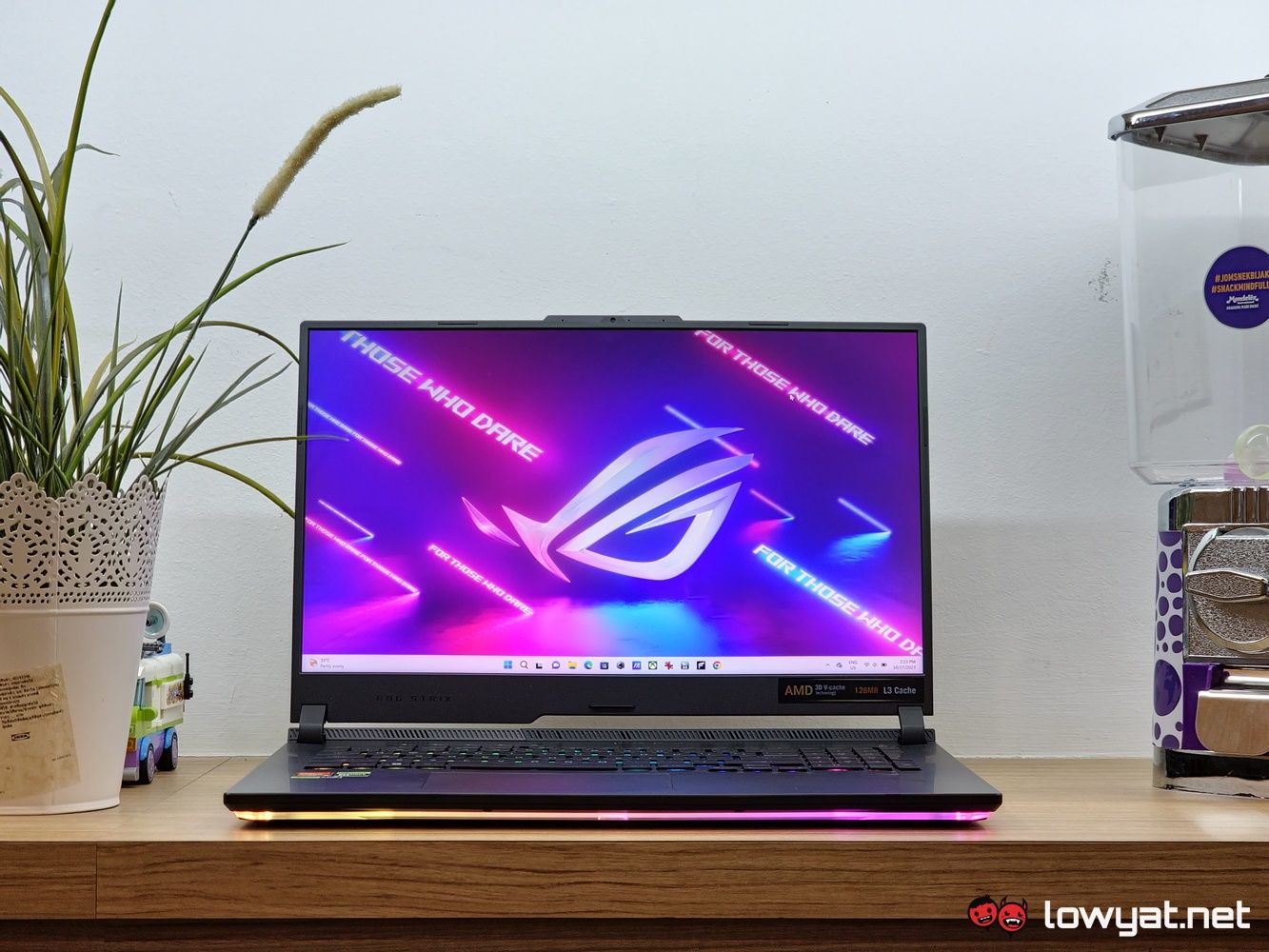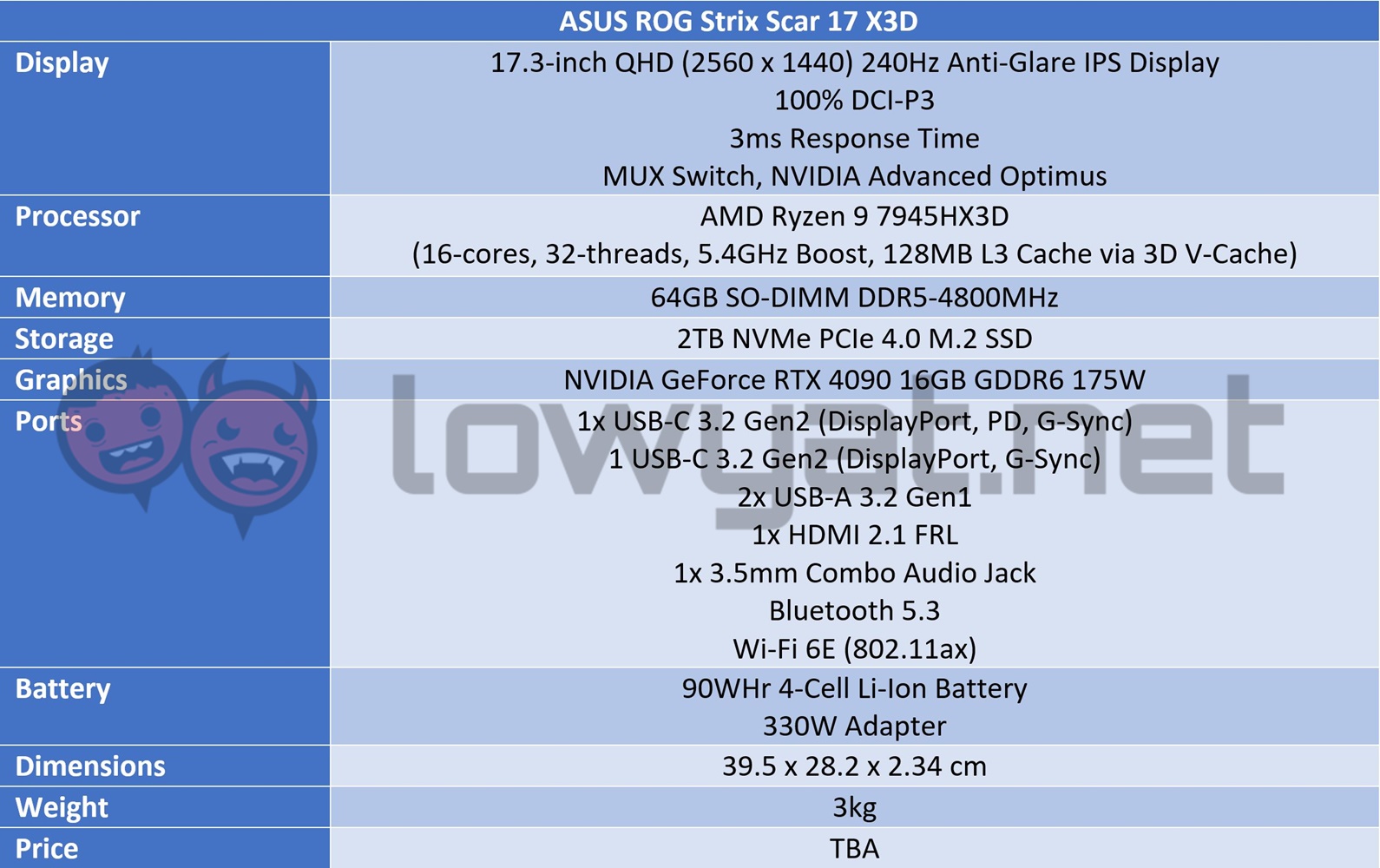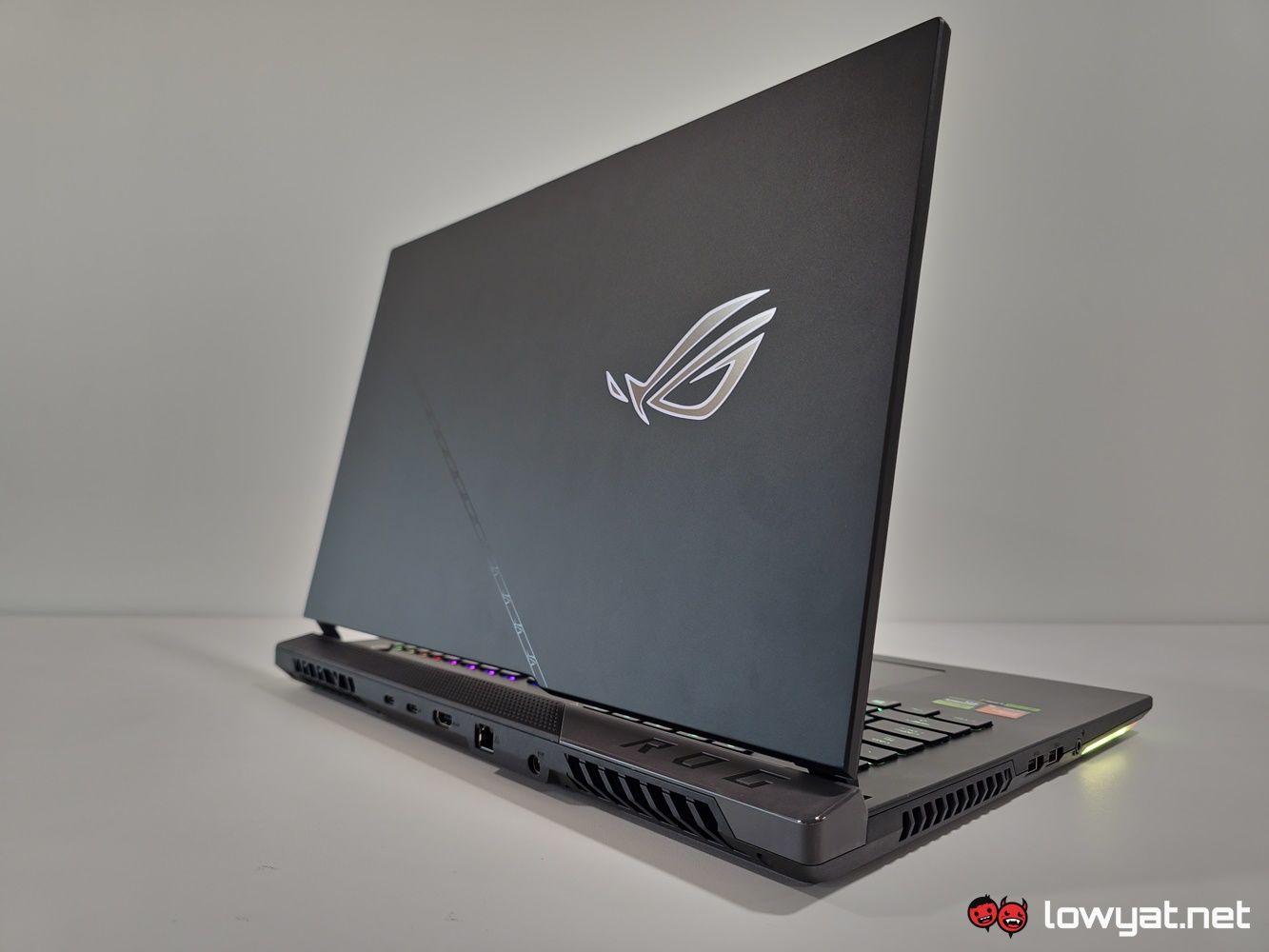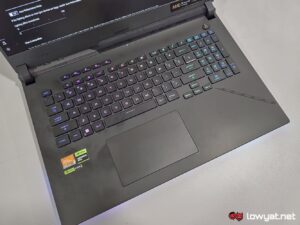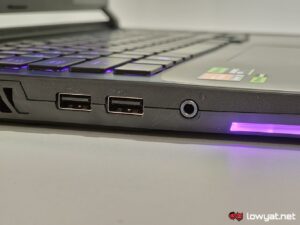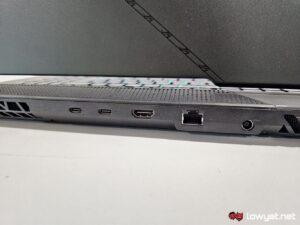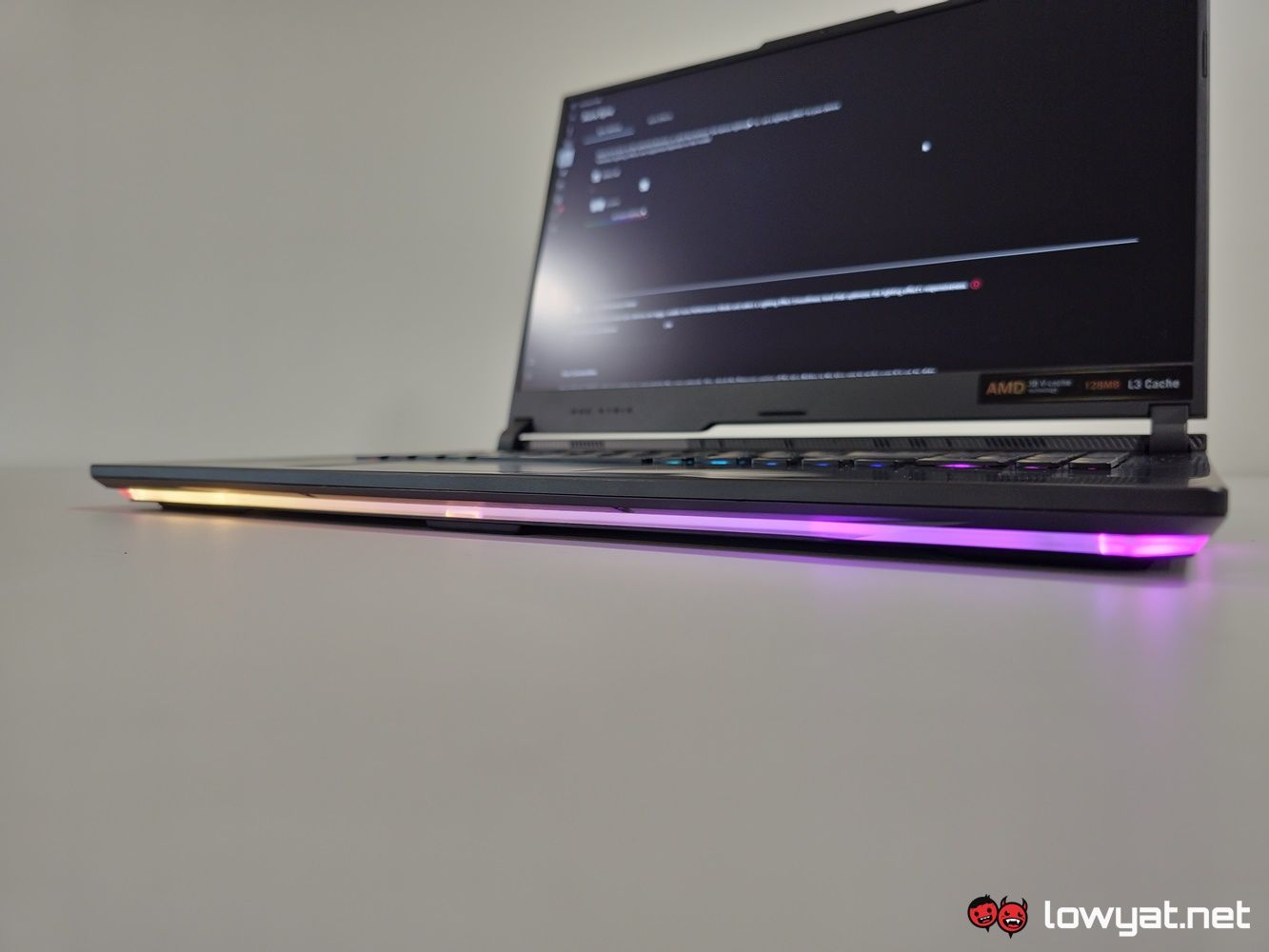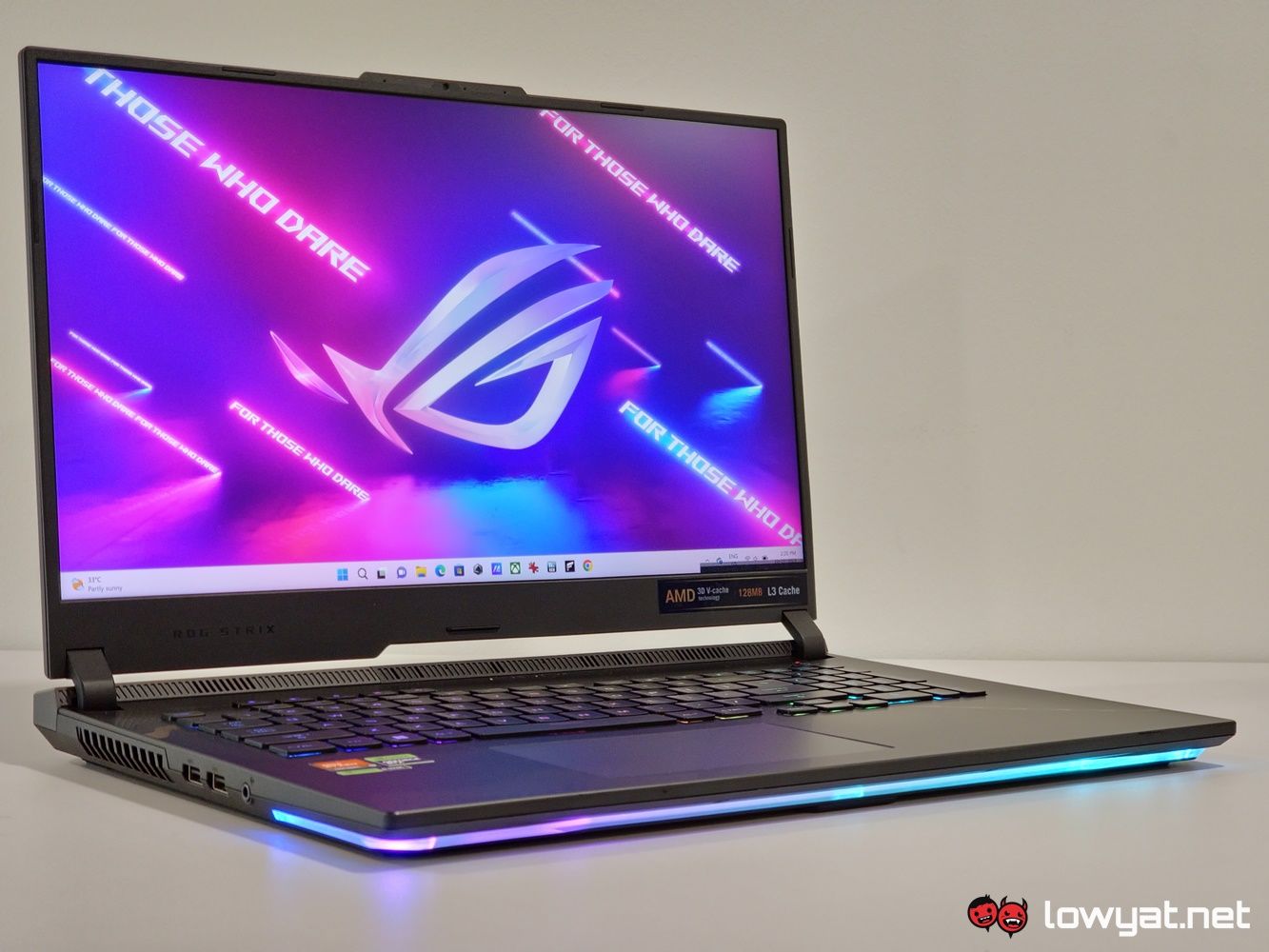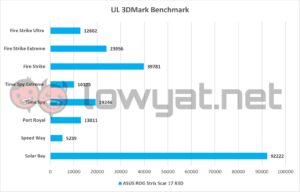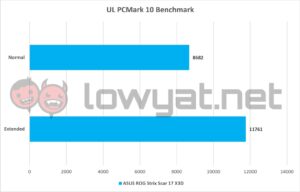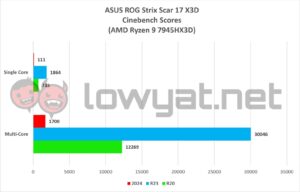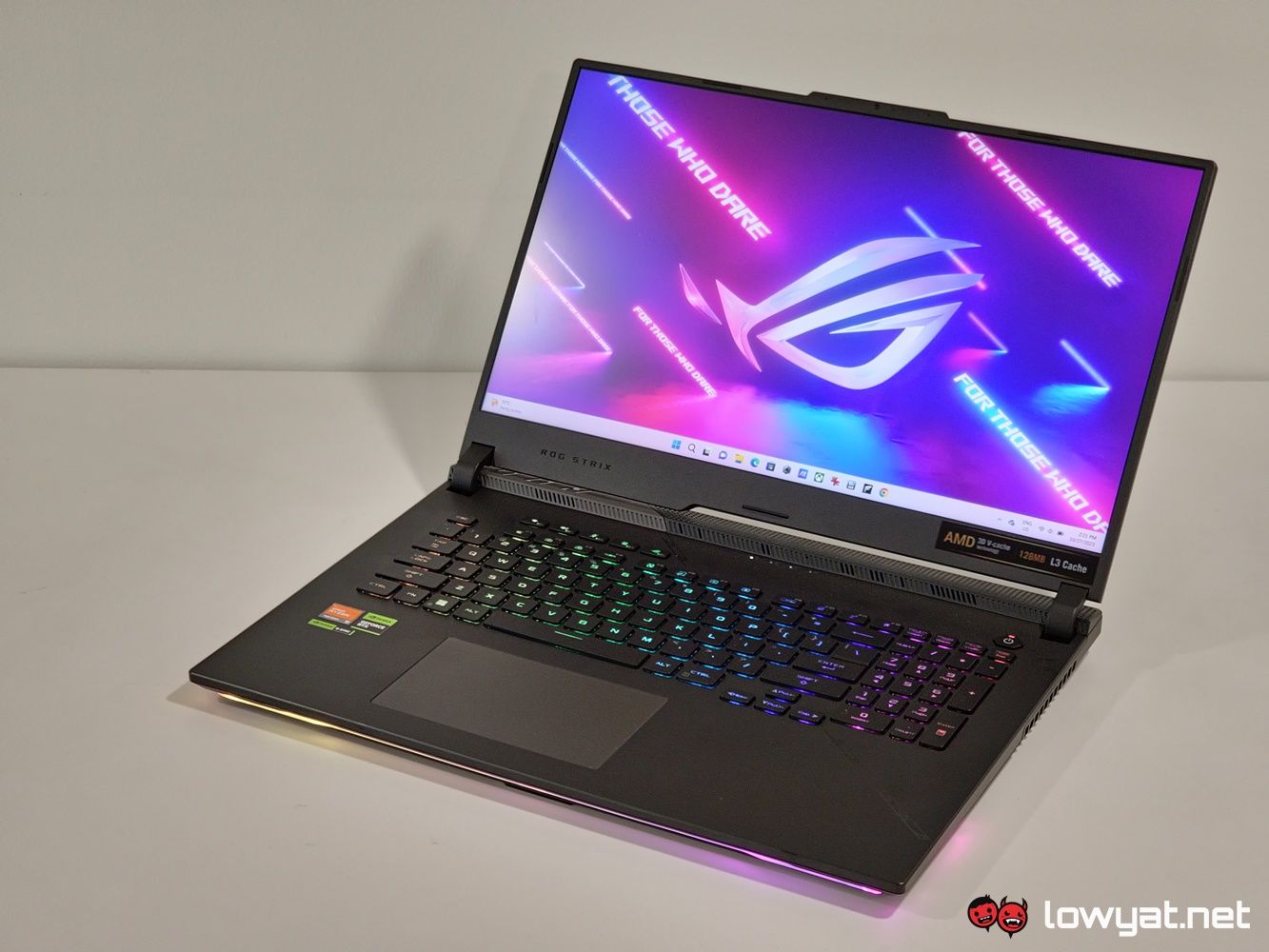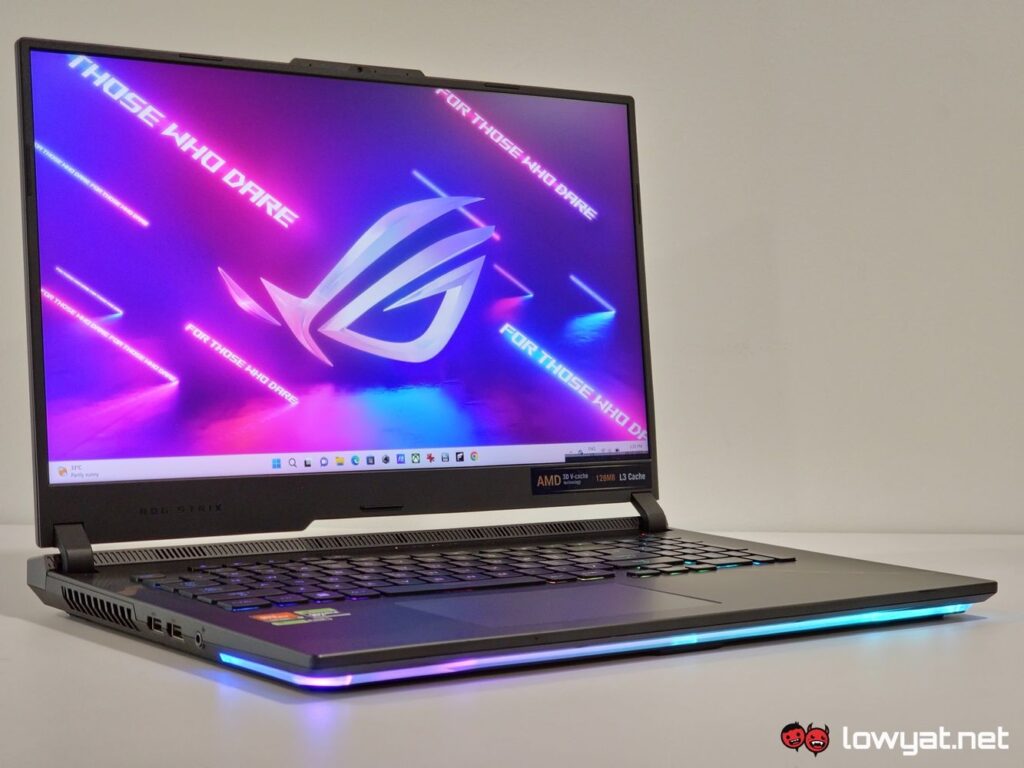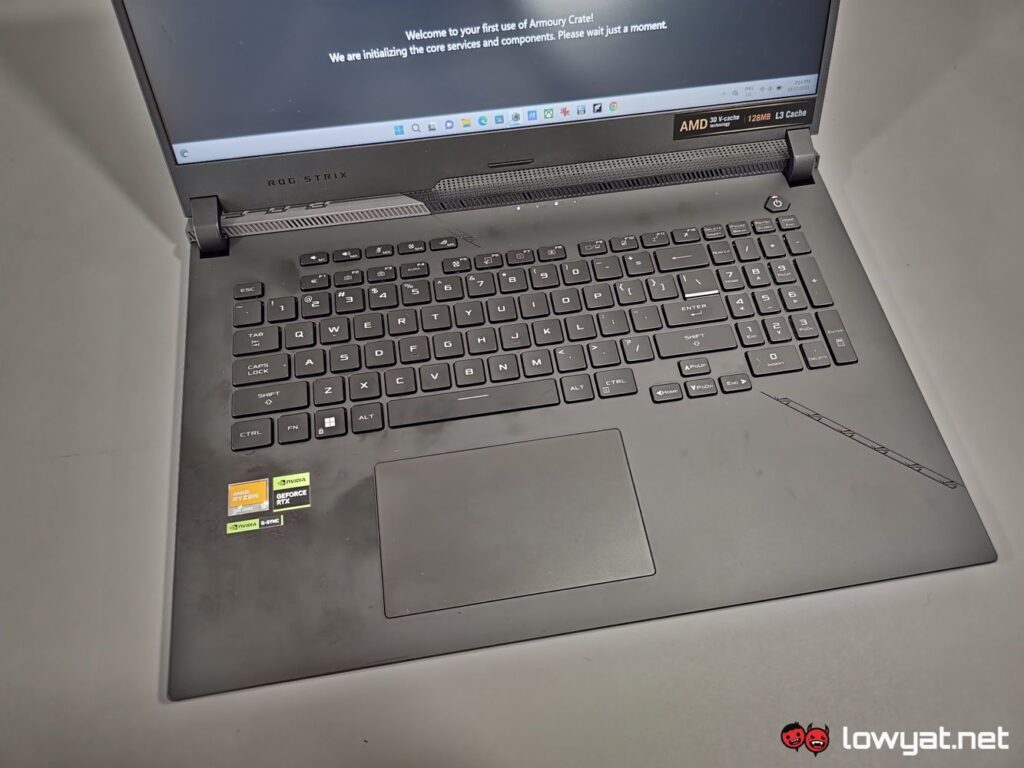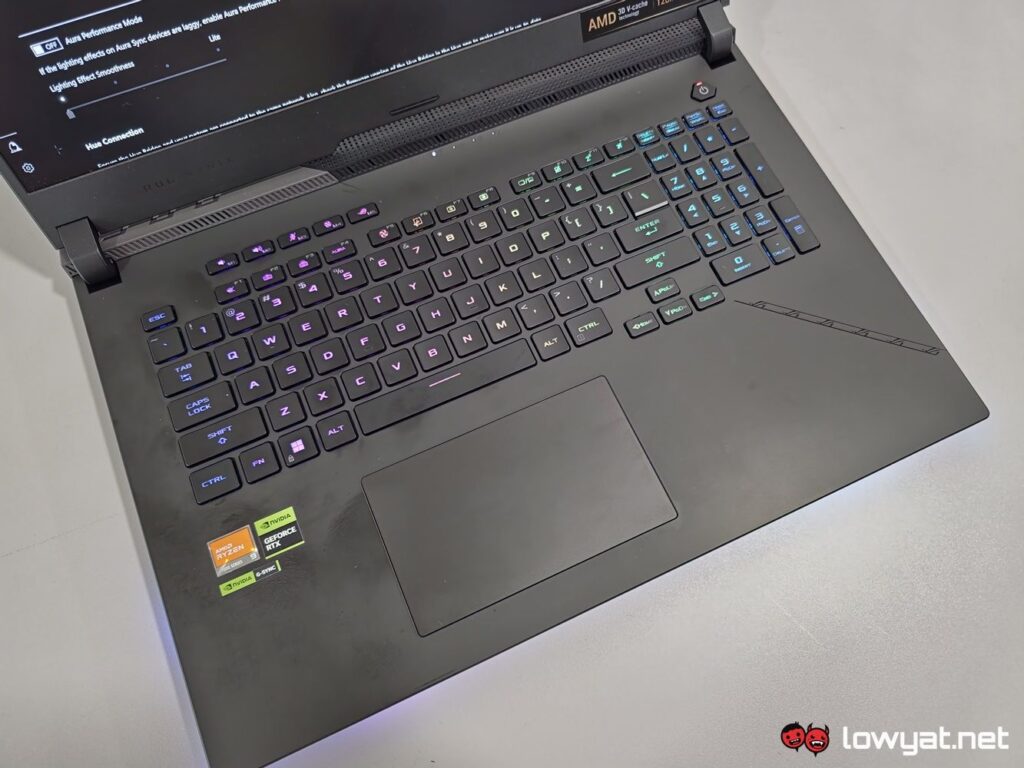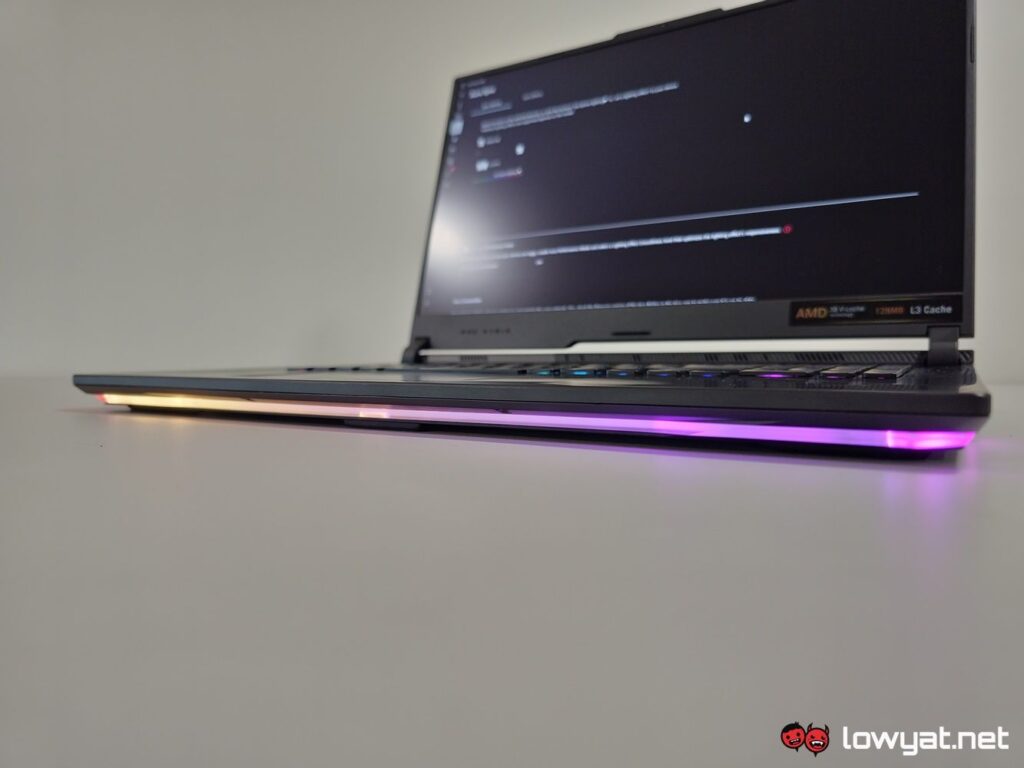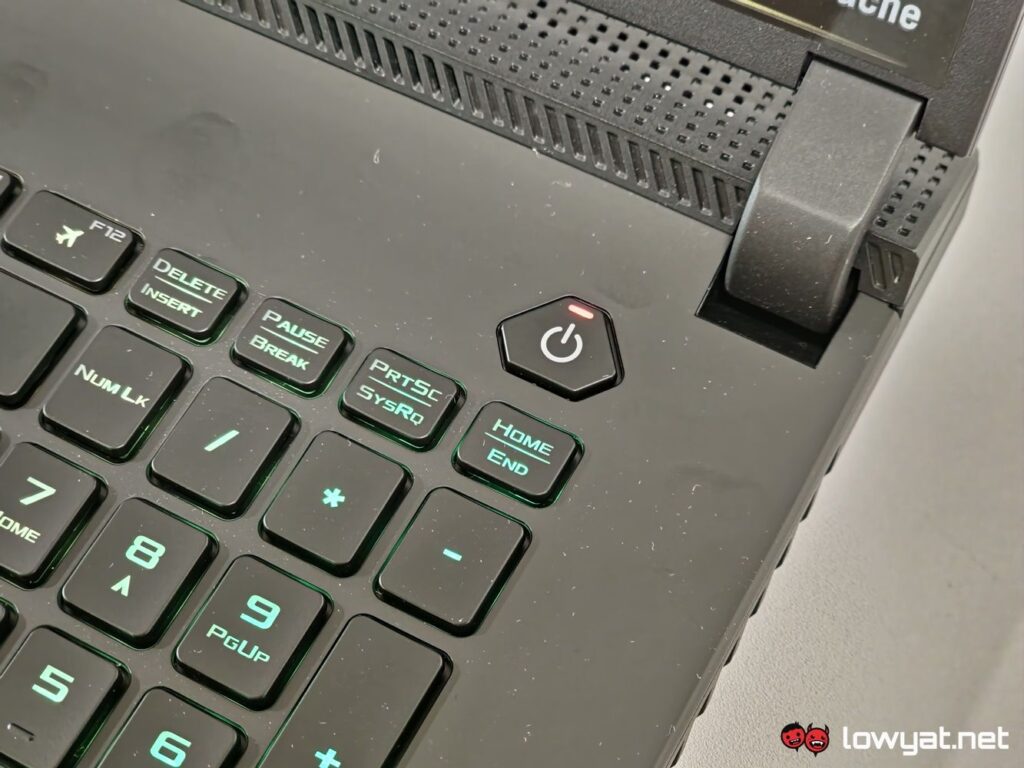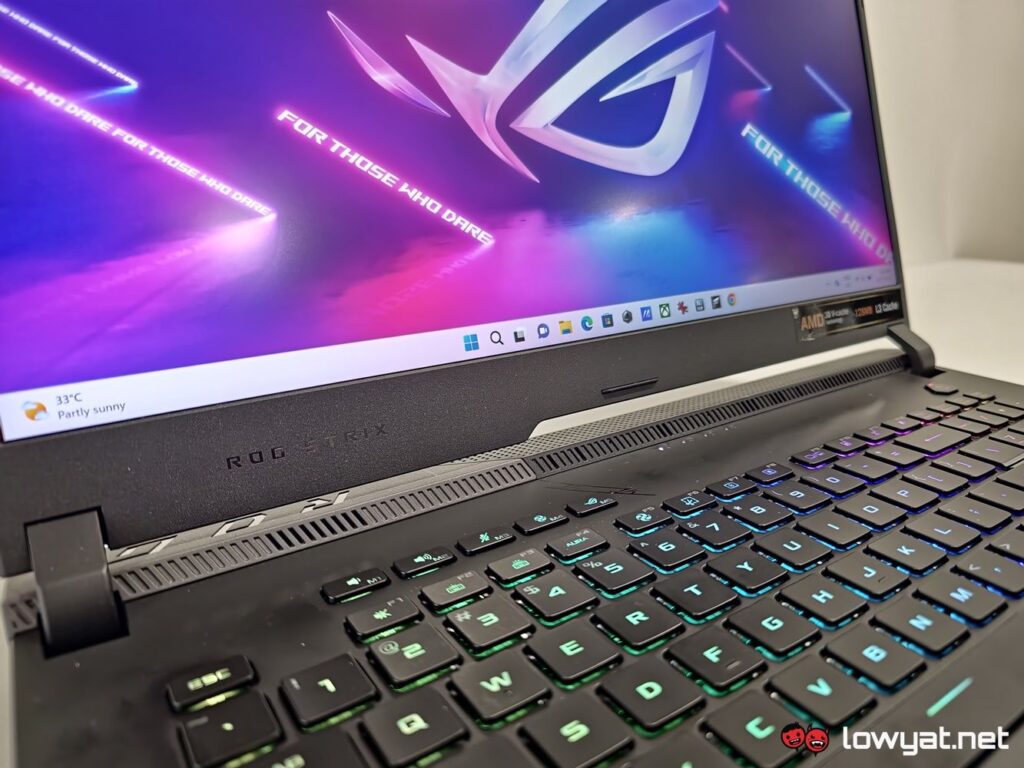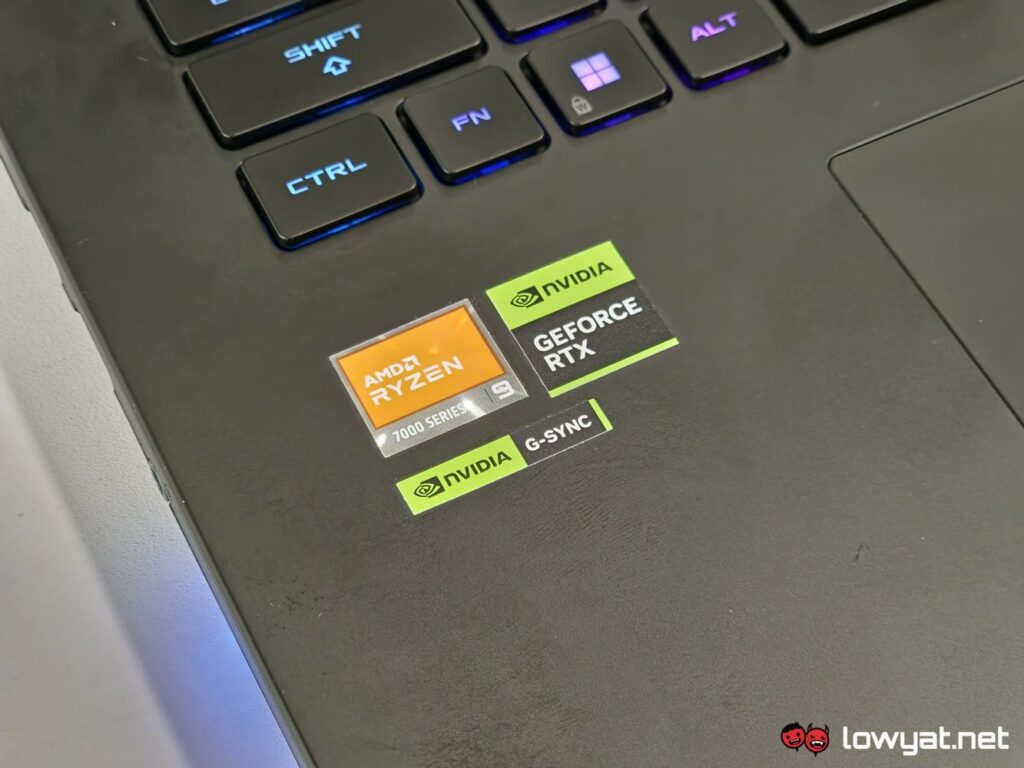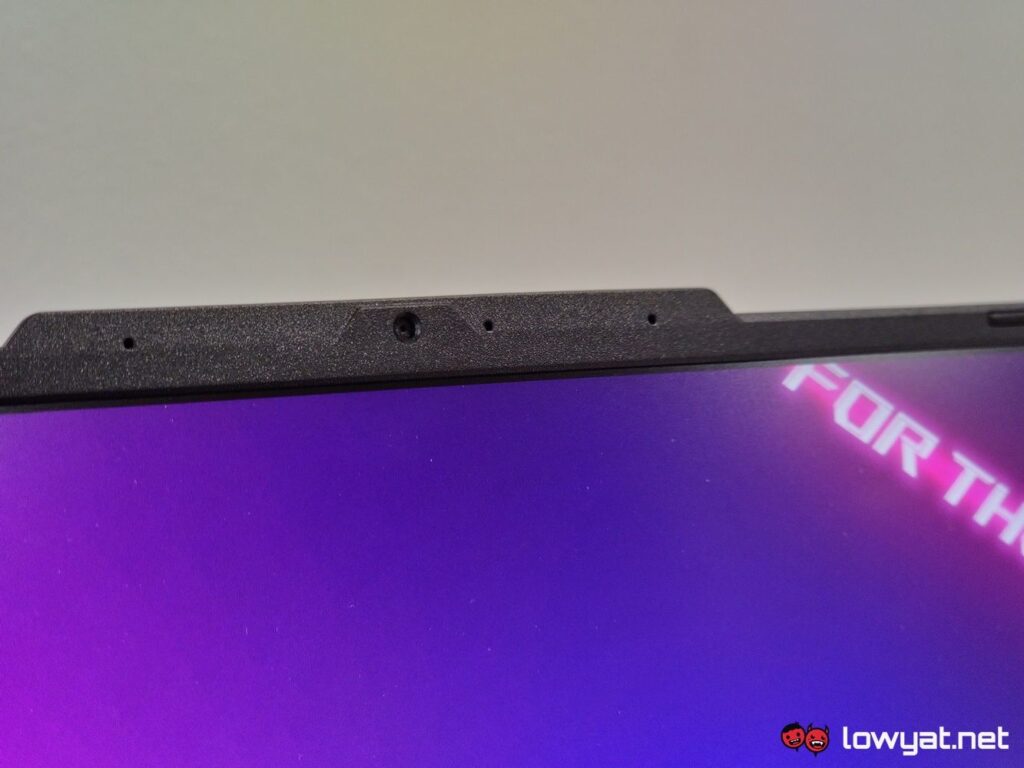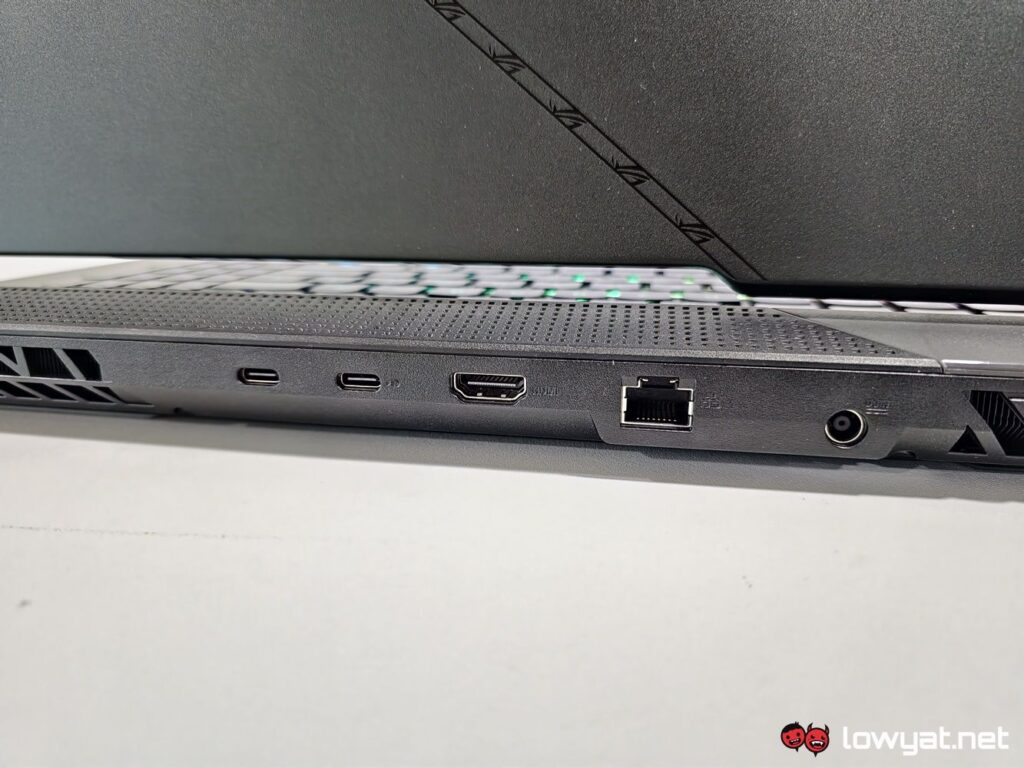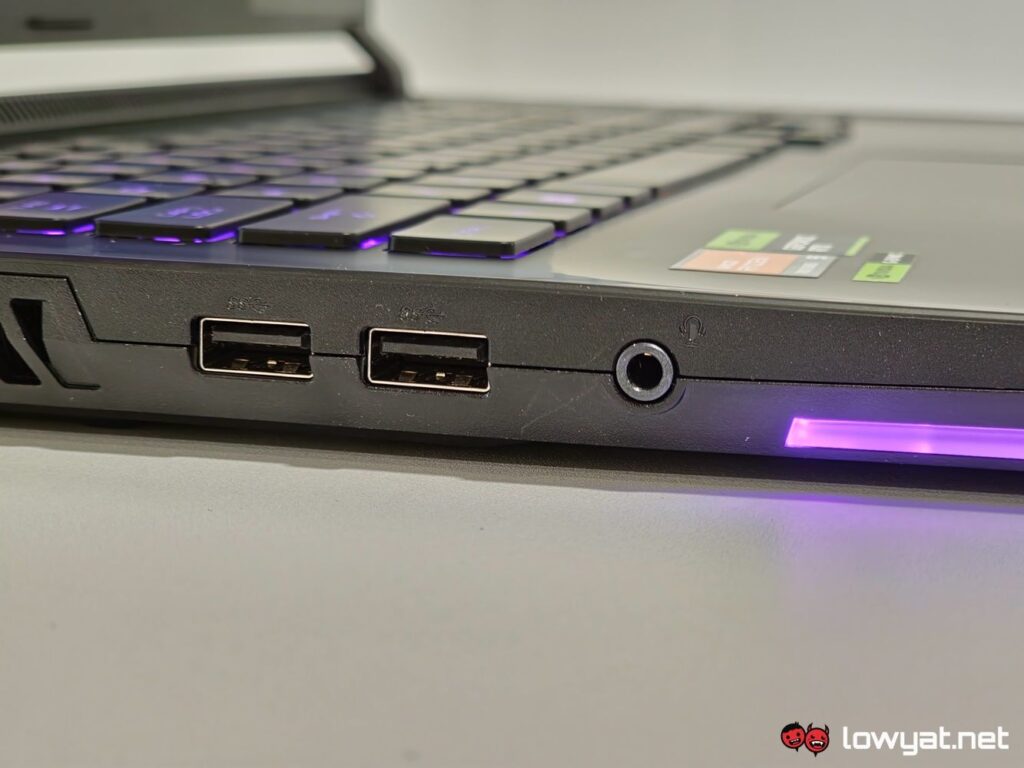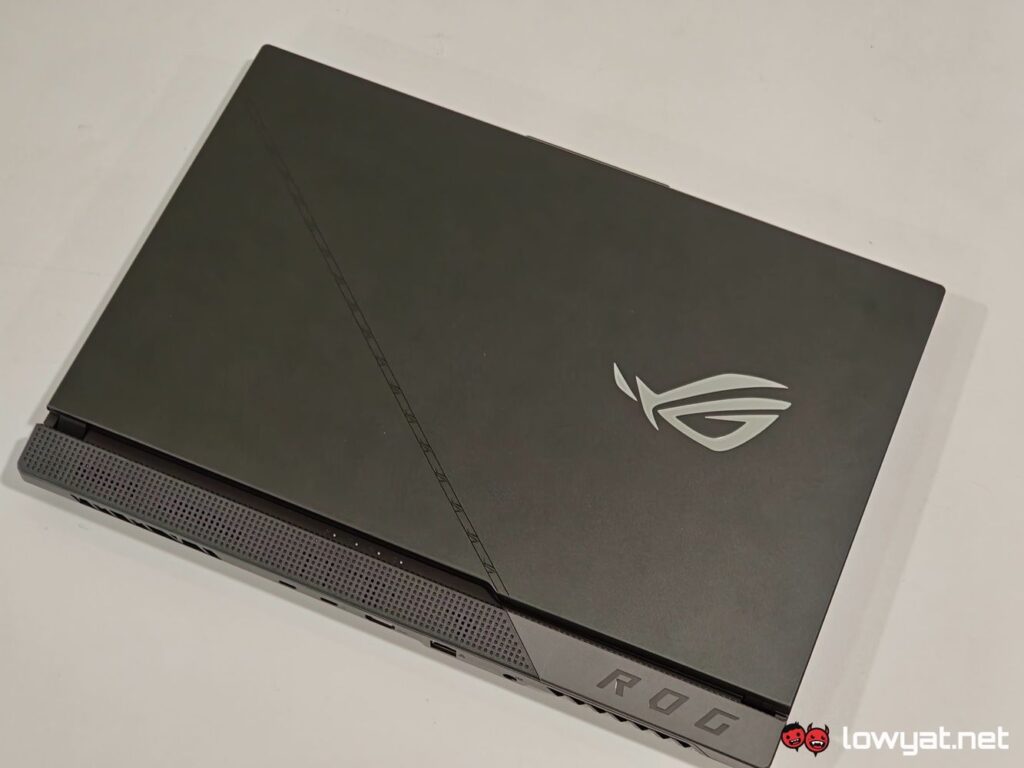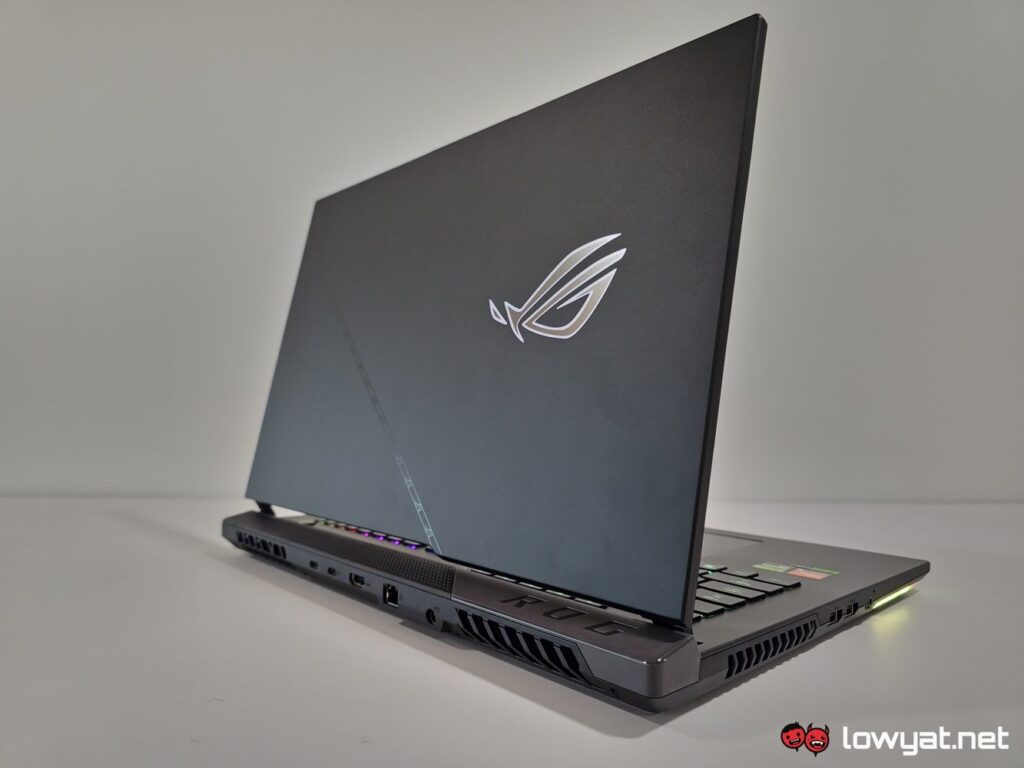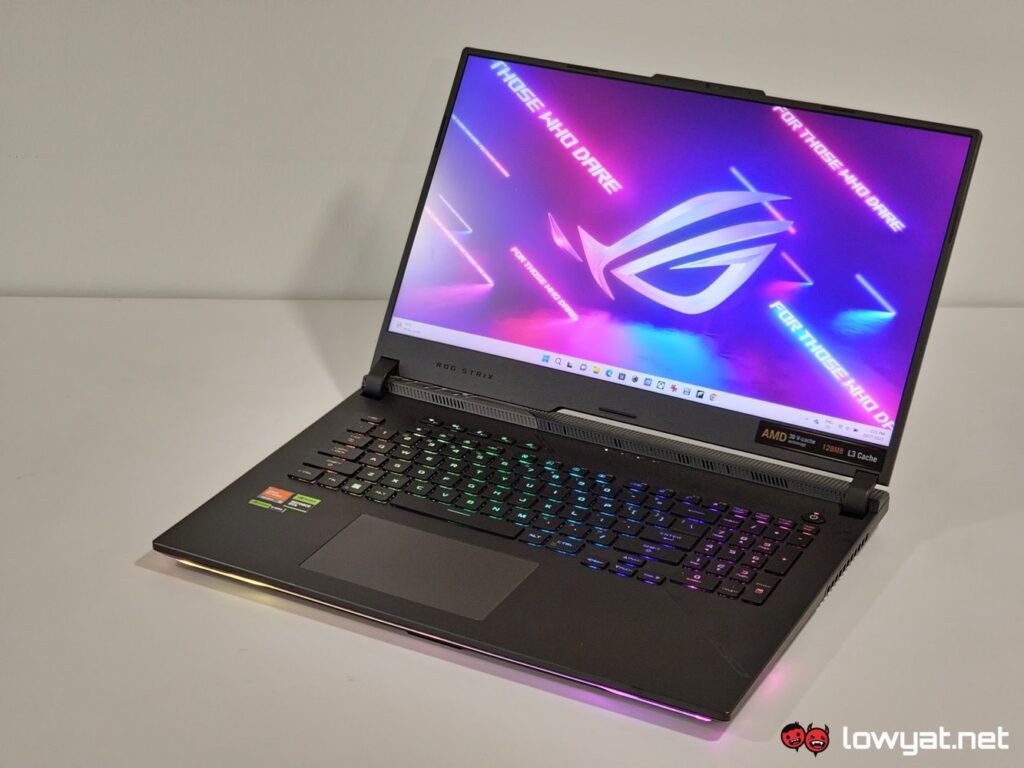Earlier in the year, AMD announced that it would be bringing its 3D V-Cache technology to the laptop space, a promise that manifested itself into the Ryzen 9 7945HX3D, which itself is a variation of the currently existing 7945HX. Naturally, to house the new powerhouse CPU, AMD clearly needed a laptop that would be able to handle all of its power, and then some.
Enter the ASUS ROG Strix Scar 17 X3D, which itself is a titan of gaming and power in its own right, and with good reason.
Specifications
Design And Functionality
So, let’s get this out of the way: the ROG Strix Scar design that you see here is pretty much par for the course with ASUS. You get the asymmetrical design at the bottom of the display, which adds to its novelty and aesthetics.
Of course, as with all Scar laptops, you get that same heavy base, where all the components lay, but more importantly, it serves as the grounding point that allows me to do those one-finger display lift-and-open motions, which is also made even easier given that the hinges of the Scar 17 X3D do not need to come into contact with the table surface, unlike the Ergolift designs on the current range of ROG Zephyrus laptops. As for its chassis, ASUS clearly hasn’t deviated from the design of the original Scar 17; it’s still all-black and if you don’t wipe or wash your hands often, it’s a very inviting surface for fingerprints
The Scar 17 X3D also isn’t lacking ports but more importantly, I absolutely love that the laptop relegates virtually all of those said I/O ports to the rear of the machine. Sure, the USB-C ports are just USB 4 but at the very least, they still support port expansion and if necessary, UHBR output if needed. That being said, I think it’s a missed opportunity that ASUS didn’t include one SDCard reader with this laptop.
The internal specs of this laptop are, in a word, overkill, especially for its attached display.
Diving ever so briefly into the subject of internal specifications, the components in this Scar 17 X3D are just, for lack of a better or original word, overkill. On that note, this nicely allows me to introduce you to the star of the show: the Ryzen 9 7945HX3D. For those of you who have been closely following the travails of AMD to date, or even if you’re just adoring fans, the 7945HX3D currently sits as one of the chipmaker’s most powerful laptop CPU it has made, and that’s all thanks to its massive L3 Cache of 128MB, brought about by the use of its own 3D V-Cache chiplet technology. The downside to 3D V-Cache though, as it has been since its inception, is that, unlike its non-X3D counterpart, this CPU cannot be overclocked, at least in a traditional sense.
But that’s not going to be an issue, especially when you consider the rest of the components that reside inside this Scar 17 X3D. Paired with the 7945HX3D is an NVIDIA GeForce RTX 4090 discrete graphics with a maximum TGP of 175W. Simply put, this variant is a real monster of a mobile GPU, with plenty of power to give in any game, especially when it’s not running at 4K resolution. More on that later.
Given the size of the Scar 17 X3D, ASUS went with the full-sized keyboard that I assure you, will take some getting accustomed to. At the very least, though, the typing experience is a comfortable one; key travel is fairly deep and the key switches fall somewhere between linear and tactile. Because of that, the point of actuation of each key is firm but not harsh, and that in turn translates to prolonged periods of typing.
On a side note, while I am not entirely a fan of full-sized keyboards on a laptop, having a dedicated numeric pad does take the load off my fingers, especially when I need to do some number-crunching. Putting that aside, the trackpad of the Scar 17 X3D definitely feels accurate and sensitive to the touch, although I wish that ASUS would’ve increased the size of the surface area.
Lastly, there’s the weight of the Scare 17 X3D. At 3kg, it is definitely a very solid desktop replacement that sits firmly in place, and only ever budging whenever I need to make a slight adjustment to its placement and position on the table.
Performance And Battery
At this point, there isn’t much I can say that you, dear readers, would’ve already surmised in your head about the Scar 17 X3D. With a Ryzen 9 7945HX3D, RTX 4090, 64GB of DDR5 RAM, and a display with a maximum resolution of 1440p and refresh rate of 240Hz, this laptop effectively bashes the hell out of every synthetic and real-world benchmark I have to throw at it, and effortlessly.
Synthetically, the 7945HX3D practically outpaces even the Intel Core i9-13950HX that we reviewed with the Razer Blade 16 by nearly double the test numbers in all 3DMark test, although those gains aren’t quite as pronounced in PCMark 10. In the trio of Cinebench tests, the CPU practically takes 2nd place in the lists of each respective app but to be fair, that list gets updated frequently, in part with scores sometimes obtained through extreme overclocking of a multitude of CPUc.
Gaming is clearly where the Scar 17 X3D sings. Again, as I mentioned earlier, at 1440p, a top-tier X3D CPU, and the behemoth that is the RTX 4090 clustered within a 17.3-inch chassis, what you have here is a recipe of overwhelming power.
On average, every title on my gaming benchmark list registered average framerates above the 80 fps mark. Heck, Cyberpunk 2077, with all the visual trimmings afforded to it via NVIDIA’s latest DLSS 3.5 upscaling and Ray Reconstruction denoising technology – the latter a feature that is only available with the game’s GPU-intensive path-tracing mode turned on – maintained close to 100 fps on average and had 1% lows of 87 fps throughout my playthrough.
And before you ask: Yes, Borderlands 3 is an exception to the rule and I honestly don’t have an answer as to why that is. It’s especially weird when you consider that Deus Ex: Mankind Divided, which is renowned for being a game that isn’t as properly optimised, is capable of sustaining more than 130 fps.
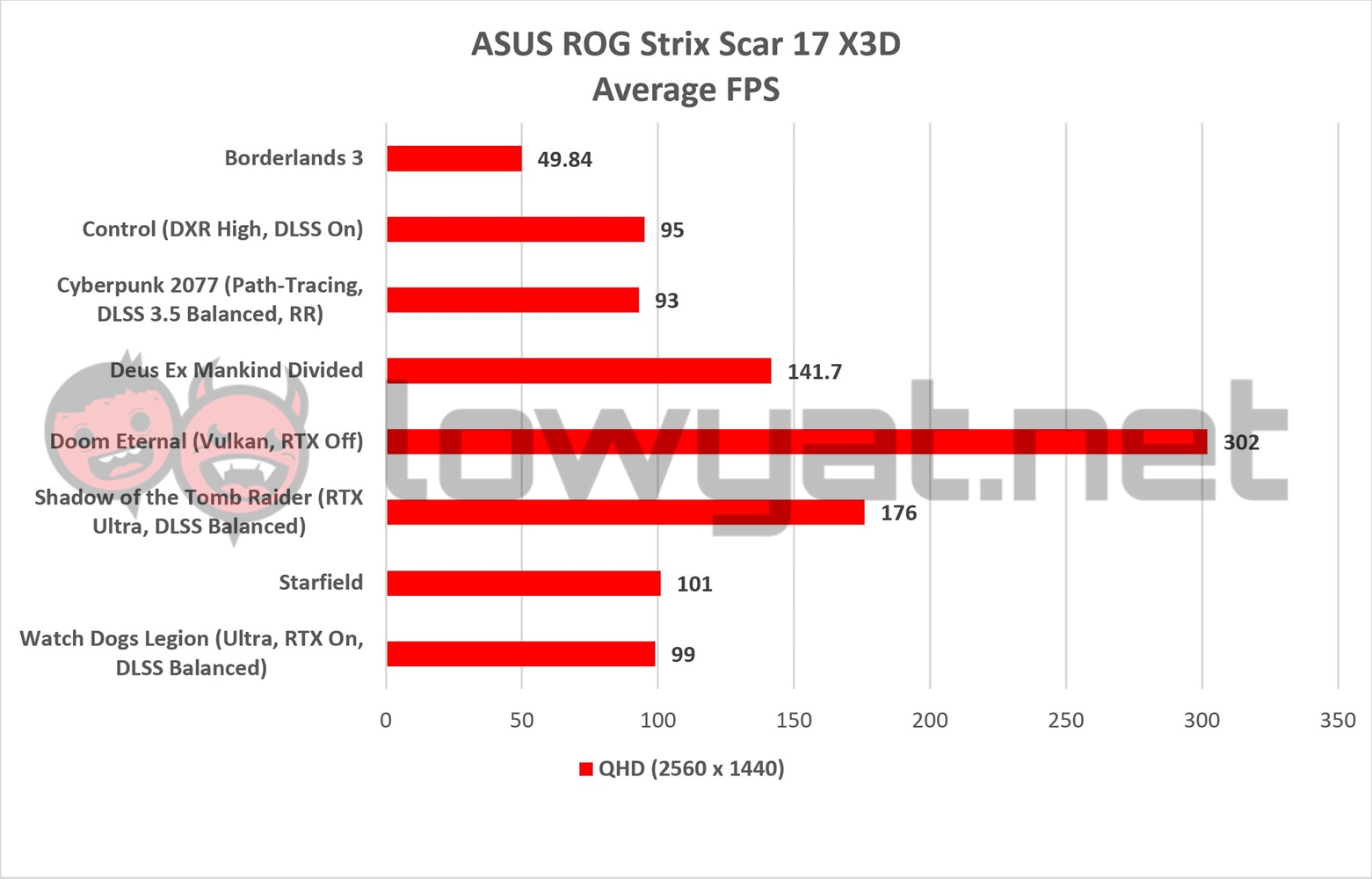 As for battery life, the endurance of a laptop that is going all in on power and performance is what you’d imagine it to be: pretty abysmal. Even with battery saver mode on, the display brightness reduced to 40%, and the refresh rate to 60Hz, the best I’m able to eke out of the Scar 17 X3D, and its battery 90WHr battery is barely three hours. Honestly speaking, it’s a fair – not small – price to pay, especially given that this is a desktop replacement and not something you’re going to lug around to holidays, getaways, or retreats. Well, okay, LAN parties are clearly the only exception to the rule here.
As for battery life, the endurance of a laptop that is going all in on power and performance is what you’d imagine it to be: pretty abysmal. Even with battery saver mode on, the display brightness reduced to 40%, and the refresh rate to 60Hz, the best I’m able to eke out of the Scar 17 X3D, and its battery 90WHr battery is barely three hours. Honestly speaking, it’s a fair – not small – price to pay, especially given that this is a desktop replacement and not something you’re going to lug around to holidays, getaways, or retreats. Well, okay, LAN parties are clearly the only exception to the rule here.
Operating temperatures here are surprising, to say the least. Prior to my testing of the Scar 17 X3D, I was expecting the CPU, specifically, to achieve the same boiling point peaks as its team blue rival. But that clearly hasn’t been the case. At peak performance, the 7945HX3D never even broke past the 90°C barrier and in fact, hovered just below the threshold. More astounding than that, however, is the fact that the RTX 4090 inside this beast never went any higher than 75.3°C. This, while the laptop chugged along with the usual list of AAA titles, running at their highest graphics presets.
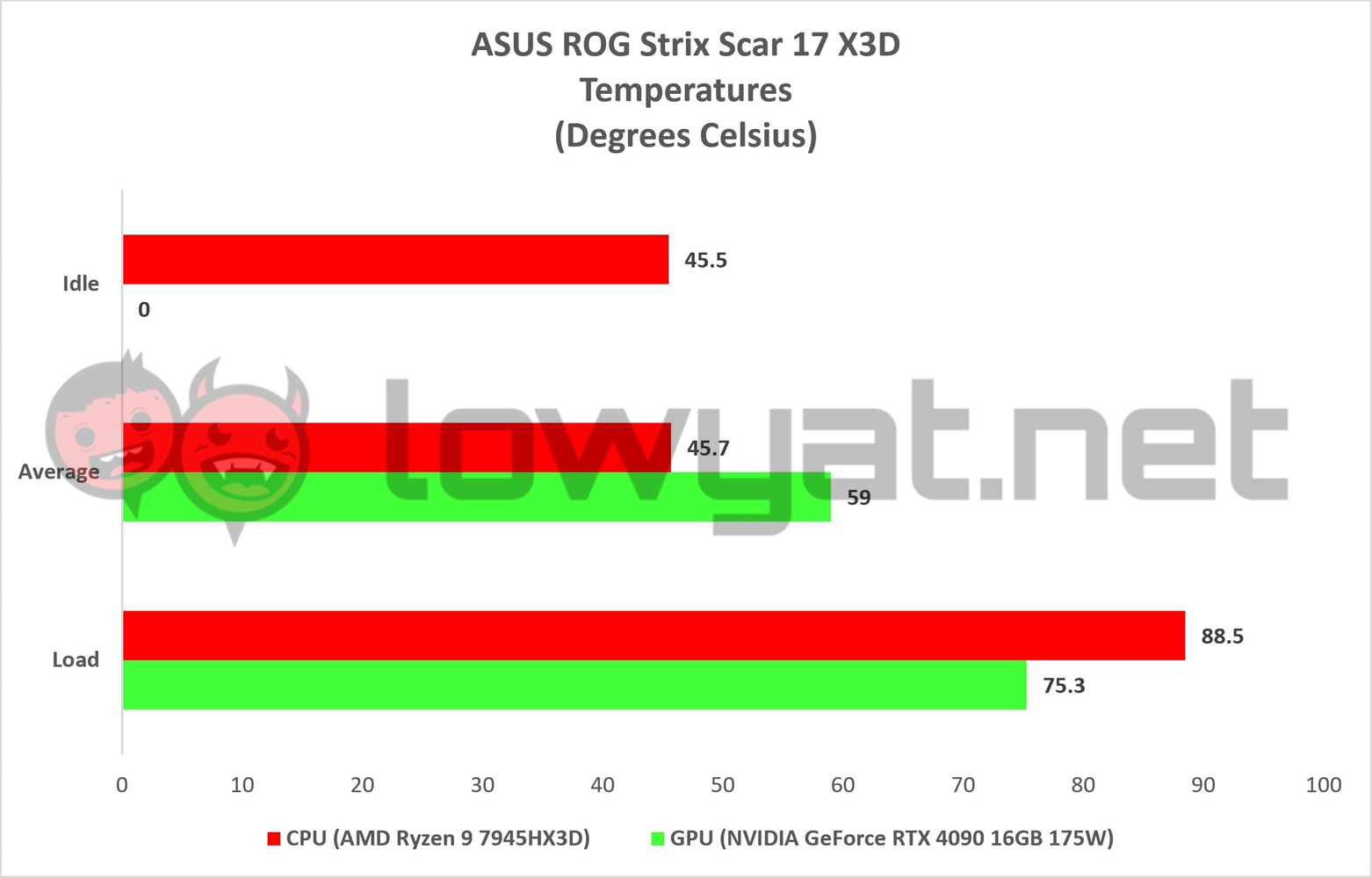 All this, then, boils down (no pun intended) to the Scar 17 X3D’s cooling solution that is yet again, another engineering feat. Now, as one would expect of a gaming laptop of this calibre, the acoustics from the internal fans are going to get loud and fairly aggressive when it is put to the task. But that’s just it: Yes, the fans got loud but at no point throughout my testing did it ever raise its volume to the point that I would describe it as violent or as the parlance goes, jet engine-ready. But the even better part of this cooling system? It doesn’t do that gradual build up to maximum speed – once it detects that the laptop is running a game, those fans just kick into overdrive at a snap of a finger.
All this, then, boils down (no pun intended) to the Scar 17 X3D’s cooling solution that is yet again, another engineering feat. Now, as one would expect of a gaming laptop of this calibre, the acoustics from the internal fans are going to get loud and fairly aggressive when it is put to the task. But that’s just it: Yes, the fans got loud but at no point throughout my testing did it ever raise its volume to the point that I would describe it as violent or as the parlance goes, jet engine-ready. But the even better part of this cooling system? It doesn’t do that gradual build up to maximum speed – once it detects that the laptop is running a game, those fans just kick into overdrive at a snap of a finger.
Conclusion
So there you have it. At its peak, the ASUS ROG Strix Scar 17 X3D is best described as my title for this review: one helluva souped gaming desktop replacement that is only made more remarkable by the fact that, at the time of writing, it is still the only laptop with the privilege of housing AMD’s 3D V-Cache powerhouse processor that is the Ryzen 9 7945HX3D. Seriously, if you’re looking for pure, unbridled power in a laptop with attitude, and battery endurance be damned, I sincerely cannot recommend this laptop enough.
At its worst though, the Scar 17 X3D can be a hot mess of stutters, jitters, and delayed response. No, really: there were times when the laptop would suddenly enter said state, to which it would take ages for me to complete simple and mundane tasks like opening up a web browser or even transferring files from folder to folder. The good news, though, is that these issues are often relegated to the Windows desktop and when push comes to shove, all that is needed is a cold hard reboot.
In summary, this isn’t just a bog standard gaming laptop – the Scar 17 X3D is an overpowered desktop replacement, where the Ryzen 9 7945HX3D housed in it is essentially a Ryzen 7000 Series processor that has been fed nothing but steroids since its inception, and given what I have seen here with regards to its performance, I sincerely believe that Intel may already be chewing its fingernails behind the scenes. In fact, the blue chipmaker’s only reprieve at this point is that ASUS Malaysia has confirmed to us that this laptop won’t be coming in through official channels which, like the RTX 4090-powered Zephyrus G14, just seems like another missed opportunity.
Photography by John Law.
Follow us on Instagram, Facebook, Twitter or Telegram for more updates and breaking news.


